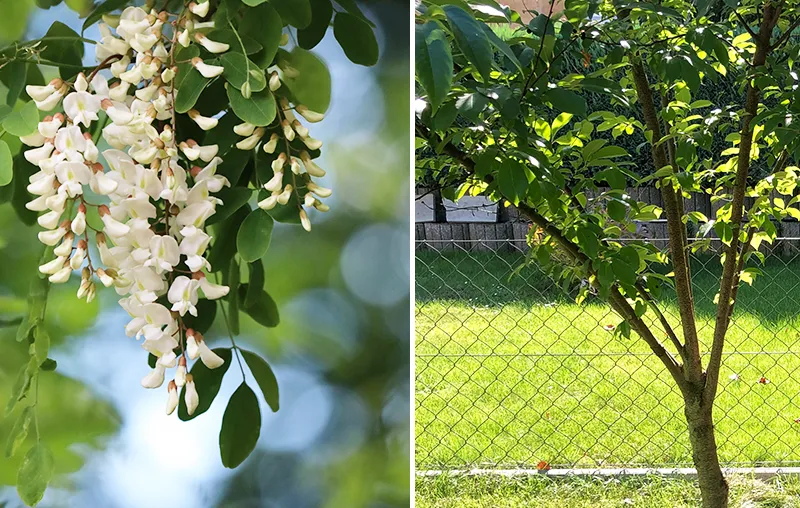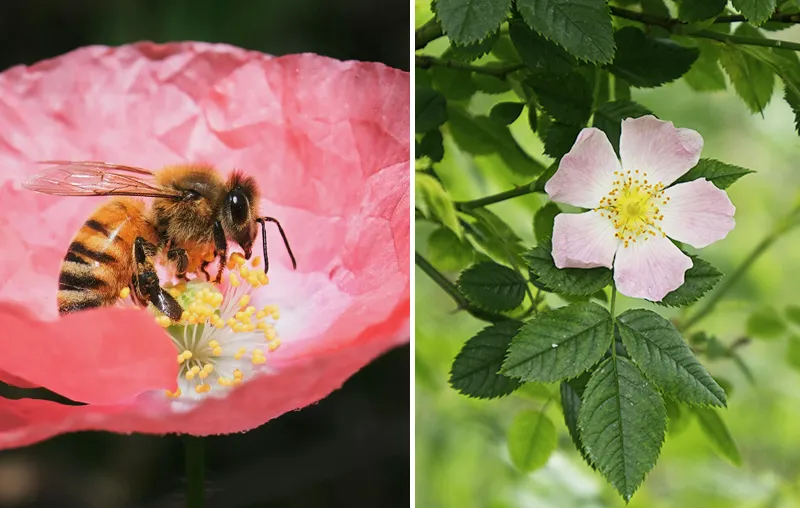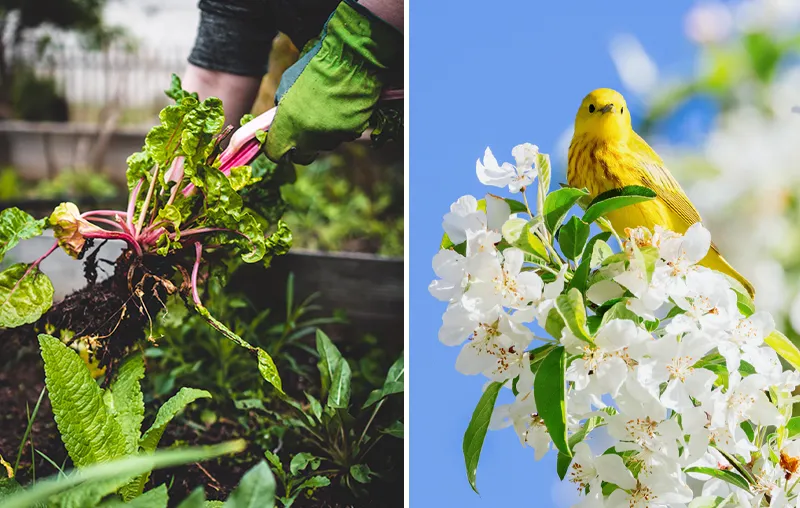Do you want to find out about invasive trees that should not be growing in your garden? Then you've come to the right place! Good hobby gardeners learn over time which plants are ecologically valuable and which have only been introduced, are worthless for nature or even cause great damage there. Of course, special attention should be paid to invasive tree species, some of which are still openly advertised and sold in garden centers.
The biggest problem with some of these introduced neophytes is that they spread so much in new environments that they displace native plant species, which in turn are important for countless insect and bird species. In order not to disturb the ecological balance and to protect the Slowing down species extinctioneach of us should be aware of these invasive, alien trees and not let them grow in the garden.
In this article, I will therefore introduce you to invasive trees and large shrubs that unfortunately grow in Germany. Avoid planting them in your garden and remove them if they have already spread. I will also provide you with suitable alternatives. Let's go! 🙂
Good to know: Neophytes are all plants that did not occur in Central Europe before 1492. There are an incredible number of neophytes, but not all of them find ideal conditions here and are automatically invasive. However, a few of them do so well here that they spread massively and drive out native species.
1. Common Lilac (Syringa vulgaris)
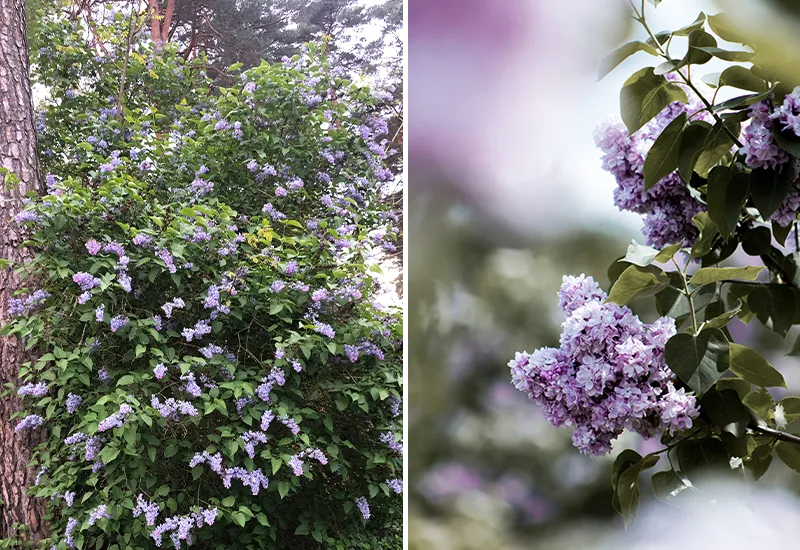
Many people enjoy the lilac-colored, fragrant flowers of the common lilac (also known as wild lilac) and plant the from Southeast Europe (Balkan countries) This is why we keep the large shrub in the garden - or at least simply let it grow there.
However, it is considered an invasive tree due to its wide distribution, the long germination period of its seeds and its rapid growth. The tree also take up plenty of light and space and thus displaces native plant species. This is why the Federal Agency for Nature Conservation (BfN) has placed it on the blacklist of invasive species.
Domestic and environmentally friendly alternatives
- Common Hawthorn (Crataegus monogyna, is available here*): Is an equally undemanding large shrub or tree with beautiful fragrant flowers - and of great value for biodiversity.
- Bird Cherry (Prunus padus; is available here*): Also flowers beautifully, grows quickly and is much more important for wild bees, for many other insects and also for birds.
2. Tree of Heaven (Ailanthus altissima)
Originally from China, the tree of the gods (now often called the "ghetto palm") is not without reason on the EU list of invasive tree species since 2019.
It spreads extremely quickly, as it spreads rapidly and even on piles of rubble and sealed urban areas is growing. It therefore poses a massive threat to the Biodiversity in Germany and should never be placed in your garden.
Domestic and environmentally friendly alternatives
- Field Maple (Acer campestre; here*): Grows quickly, is drought-resistant and robust. It also has a golden-yellow autumn color and is of high ecological value for insects and birds.
- Large-Leaved Lime (Tilia platyphyllos; here*): Provides plenty of shade, fragrant flowers and is valuable for bees and other insects. It is also resistant to drought and urban climates.
3. Douglas Fir (Pseudotsuga menziesii)
The common Douglas fir is also not native here. It has also been on the blacklist of invasive species since 2013 of the Federal Agency for Nature Conservation.
The evergreen conifer of North American origin is quite climate-resistant and also an important butterfly plant - but unfortunately it also has the Potential to endanger biodiversity in Germany. For this reason, you should not use it as a garden tree, but switch to natural alternatives that occur here in nature.
Domestic and environmentally friendly alternatives
- Norway Spruce (Picea abies): Grows quickly, is evergreen and provides a habitat for numerous animals. Equally important for forestry and natural forest structure.
- European Larch (Larix decidua): Also a robust and climate-resilient large conifer that grows quickly on nutrient-rich soils but is important for birds and insects.
4. Cherry Laurel (Prunus laurocerasus)
The cherry laurel (also known as laurel cherry), which originates from south-eastern Europe, has evergreen leaves. Therefore very popular as a dense privacy hedge.
However, it is an extremely invasive species that spreads rapidly (also via birds). It is also dangerous because it shades local plant species on the forest floor and repressed.
Domestic and environmentally friendly alternatives
- European Hornbeam (Carpinus betulus; here*): Also suitable as a privacy hedge when planted together, as it does not shed its leaves in winter - but is an important bird protection tree.
- Common Privet 'Atrovirens' (Ligustrum vulgare "Atrovirens"; here*): This low-maintenance variety forms a wintergreen, fast-growing, opaque hedge, flowers beautifully and bears berries for birds in the fall.
Certainly useful for you: Planting invasive plants is one of the most most common mistakes in the natural gardenfrom which I have also learned personally. In the linked article, I show you which other sources of error await new gardeners, but which can be easily avoided.
5. Canadian Poplar (Populus × canadensis)
The Canadian poplar is also known as the bastard black poplar. This refers to a invasive hybrid form from the Canadian black poplar and the European black poplar.
The deciduous tree up to 30 meters high but grows very quickly and is now displacing the black poplar, which is native to Germany.
Domestic and environmentally friendly alternatives
- Black Poplar (Populus nigra): Also grows quickly and tall, but creates valuable habitat for numerous species of caterpillars, beetles and wild bees and is an important nesting tree for many birds.
- White Willow (Salix alba; here*): Has similarly fast growth, is hardy and provides shelter and food for wild bees, caterpillars, butterflies, hoverflies and beetles.
6. Black Cherry (Prunus serotina)
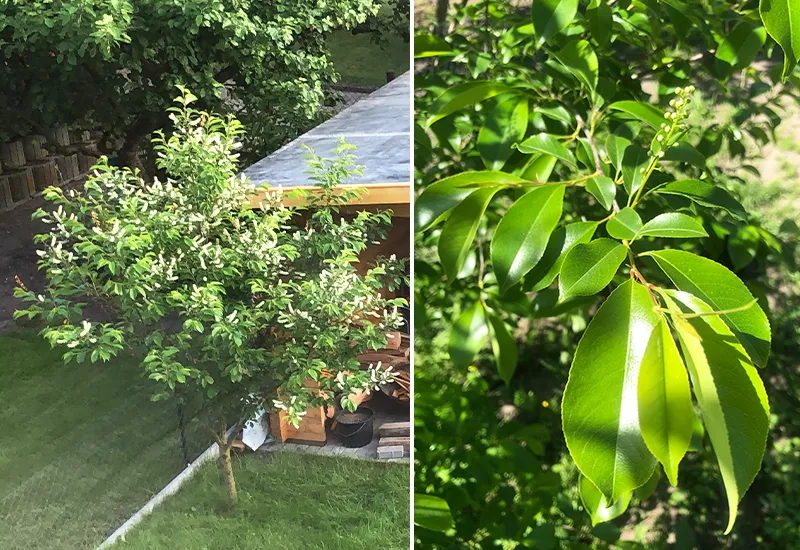
With the introduced from America (from Canada to Guatemala) I have had my very own experiences with late bird cherry (also known as late flowering bird cherry) in our garden. For a long time, I simply didn't know that it was an invasive tree species.
It grows extremely quickly, forms dense stands and crowds out native plants. Its Seeds are widely spread by birds, among otherswhich causes the tree to spread even more rapidly. So refrain from planting it.
And a good piece of advice from me: If the late weeping cherry is already growing in your area, remove them as quickly as possible. The massive, sprawling root system becomes all the more difficult to work out with each additional day.
Domestic and environmentally friendly alternatives
- Bird Cherry (Prunus padus; here*): Blooms just as beautifully, grows quickly, generally looks almost the same but is native here and important for insects and birds.
- Wild Cherry (Prunus avium; here*): Grows quickly, also has white flowers, also forms edible fruit but makes an important contribution to biodiversity.
7. Green Ash (Fraxinus pennsylvanica)
The original originating from North America Red ash (also known as green ash, Pennsylvanian ash or swamp ash) has made it onto the BfN's "management list" of invasive species.
The reason is that the neophyte already fructifies as a young tree, forms hundreds of thousands of seeds and reproduces vegetatively. It particularly likes wetlands, where it competes aggressively with native tree species.
Even if the deciduous tree available in plant shops you should give it a wide berth.
Domestic and environmentally friendly alternatives
- Common Ash (Fraxinus excelsior; here*): Grows just as fast, provides valuable wood, is hardy and important for numerous insect species.
- Norway Maple (Acer platanoides; here*): Has a broad, shady crown, grows robustly and is an important nectar source for pollinators such as wild bees and butterflies.
My please: It is important that other hobby gardeners also refrain from allowing the invasive neophytes mentioned here to grow on their own green spaces, as they compete with ecologically valuable native trees for water, space, light and soil nutrients and threaten local biodiversity. So please share the article with the people around you who should definitely read it. Thank you very much!
8. Black Locust (Robinia pseudoacacia)
The common robinia (also known as false acacia) also joins the list of non-native, invasive trees. The deciduous tree originates from North America and is probably the most common neophyte in German forests.
Although its creamy white flowers provide insects with plenty of nectar, the problem with the tree is more likely to be found underground. The bacteria on its roots enrich the soil with atmospheric nitrogen and thus displace native dry and nutrient-poor grassland species. A good reason not to plant or allow the beautiful but species-threatening tree to grow.
Domestic and environmentally friendly alternatives
- European Beech (Fagus sylvatica; is available here*): Grows similarly quickly, becomes large and forms a dense, shady crown. In contrast to robinia, however, it supports native insects and birds.
- Small-Leaved Lime (Tilia cordata; here*): Also fast-growing, with a spreading crown and lush flowering. However, the tree attracts bees and is site-adapted.
9. Boxelder Maple (Acer negundo)
The The area of origin of the ash maple, which is foreign to Germany, is Canada. However, the immigrant deciduous tree is considered invasive because it germinates quickly, grows rapidly and subsequently displaces native trees.
Even if at first glance it seems to provide food for bees and other insects and is even deliberately planted as a street tree or in parking lots, it is better not to let the tree grow in the garden. Instead, switch to native Alternatives such as the rowan berry (is available here*) or the field maple (is available here*) off.
Domestic and environmentally friendly alternatives
- Field Maple (Acer campestre; here*): Grows just as compact and bushy, tolerates drought well and is ideal as a native street or park tree. Valuable for local biodiversity.
- Whitebeam (Sorbus aria; here*): Climate-resistant deciduous tree with attractive white flowers and red berries that benefit birds and insects.
10. Staghorn Sumac (Rhus typhina)

The vinegar tree (also known as cob sumac) stands out with its striking red autumn coloring and its felty drupes. Unfortunately, it is one of the invasive neophytes among the trees, as it originates from the eastern North America and spreads very quickly, especially along railroad embankments.
With its underground root system and the fast, tall growth it displaces the native vegetation. Therefore, please do not plant it in your garden and remove it even if it is already growing there.
Domestic and environmentally friendly alternatives
- Service Tree (Sorbus domestica; here*): Offers a similarly impressive autumn coloration as the vinegar tree and bears edible, apple-like fruits that also serve as a food source for wild animals.
- Rowan (Sorbus aucuparia; here*): Forms bright red berries, grows easily and is suitable for a variety of locations. Its leaves turn a similar bright golden-orange color in autumn.
Identify, Avoid, and Replace Invasive Trees with Native Species!
If you have a species-rich, Create sustainable garden then you now know which trees should not grow there. But be aware that the list could be much longer, as there are several other non-native, invasive neophytes. For example, I can think of the Eastern White Pine (Pinus strobus) and also about the invasiveness of the Northern Red Oak (Quercus rubra) is often disputed.
The first, important step is to inform yourself about invasive trees in Germany - you have already done that with this article. The second step should then be to never buy them and plant them in your own garden. And the third is to plant native trees instead.
For example Bird-friendly trees like the Bilberry and bird cherry - or woody plants for insects, such as the Blackthorn and the Goat Willowall of which you can, for example order here at the nursery Horstmann* simply by following your heart.
"Any stupid boy can crush a beetle. But all the professors in the world can't make one."
Arthur Schopenhauer (more at Environmental protection quotes)
I hope that this article has helped you. Please feel free to share it with others. Do you have any questions, suggestions or can you think of any other invasive neophytes from the tree world? Then I look forward to your comment!
Stay environmentally conscious and act responsibly,

PS: If, apart from choosing the right trees for your garden, you want to tackle ecological challenges such as the Stop insect mortality I have compiled the relevant tips for you in the next linked article. Be sure to take a look!

